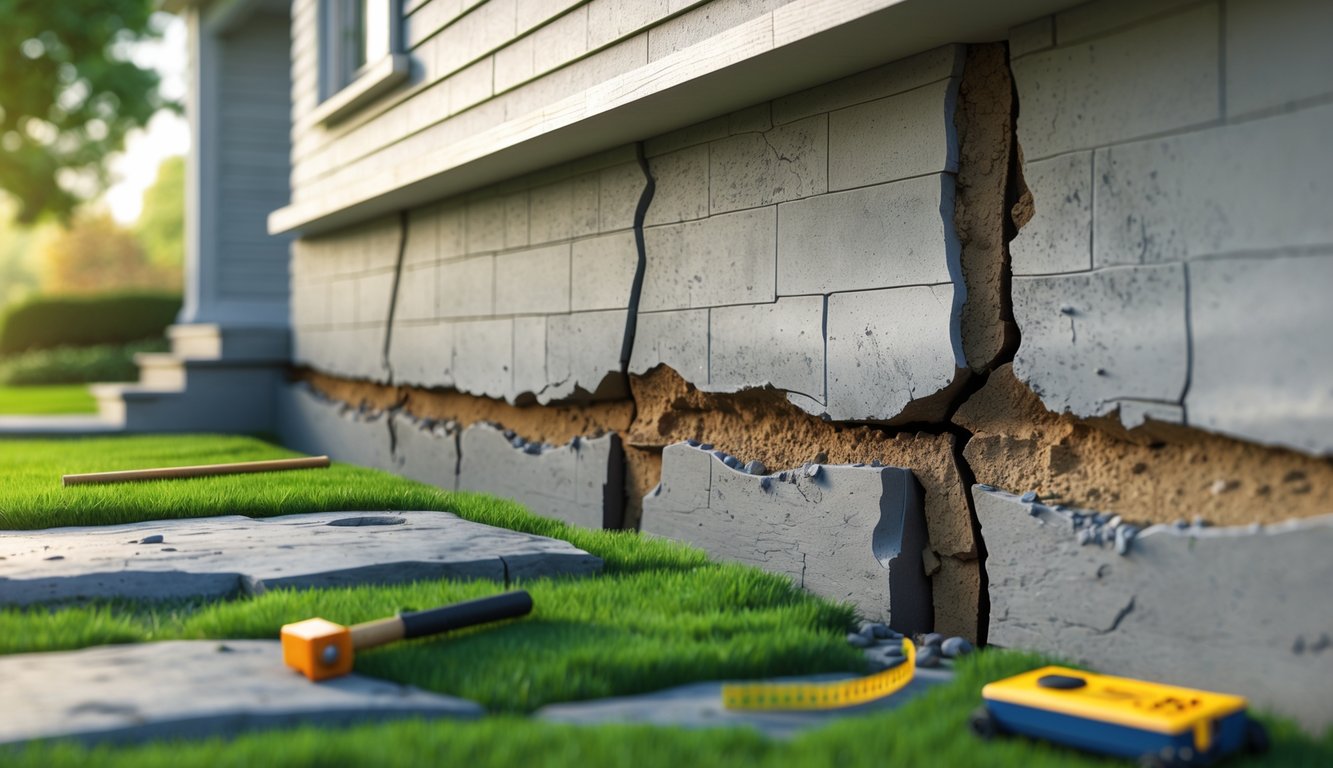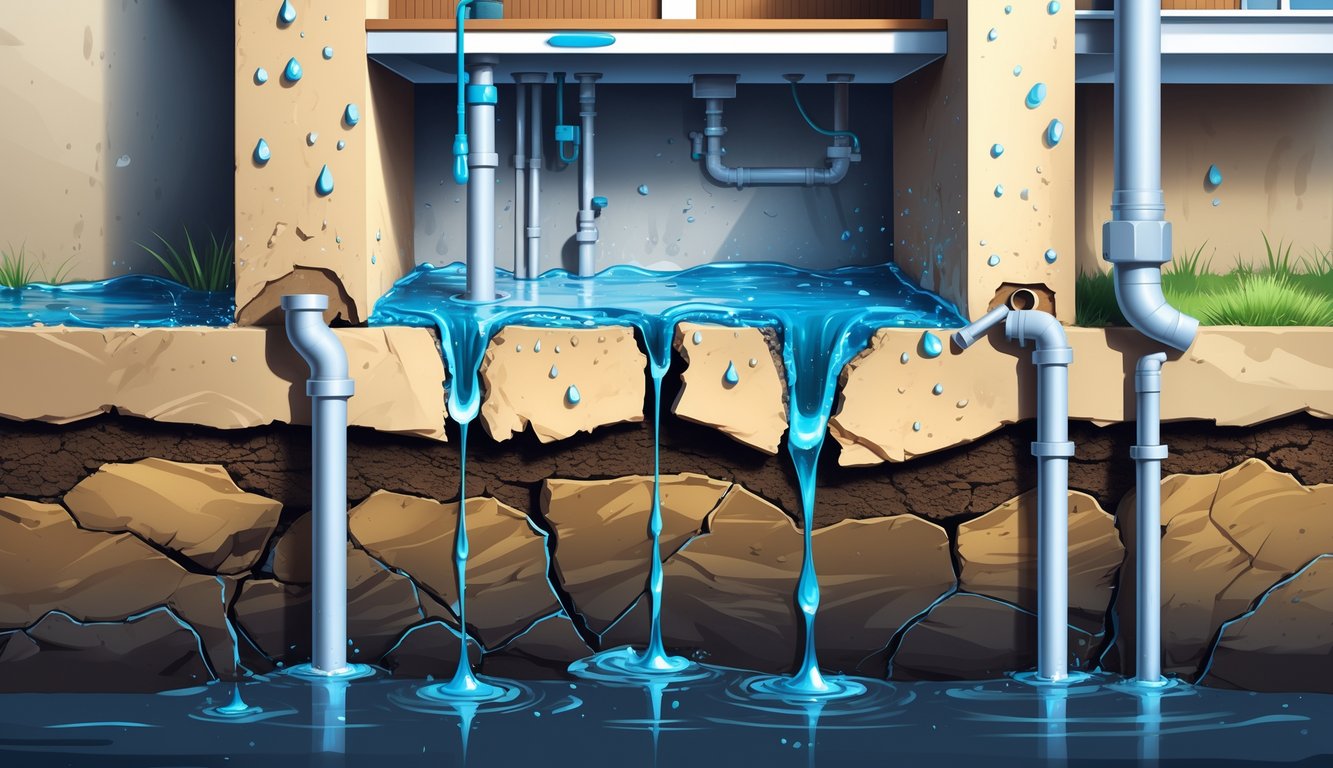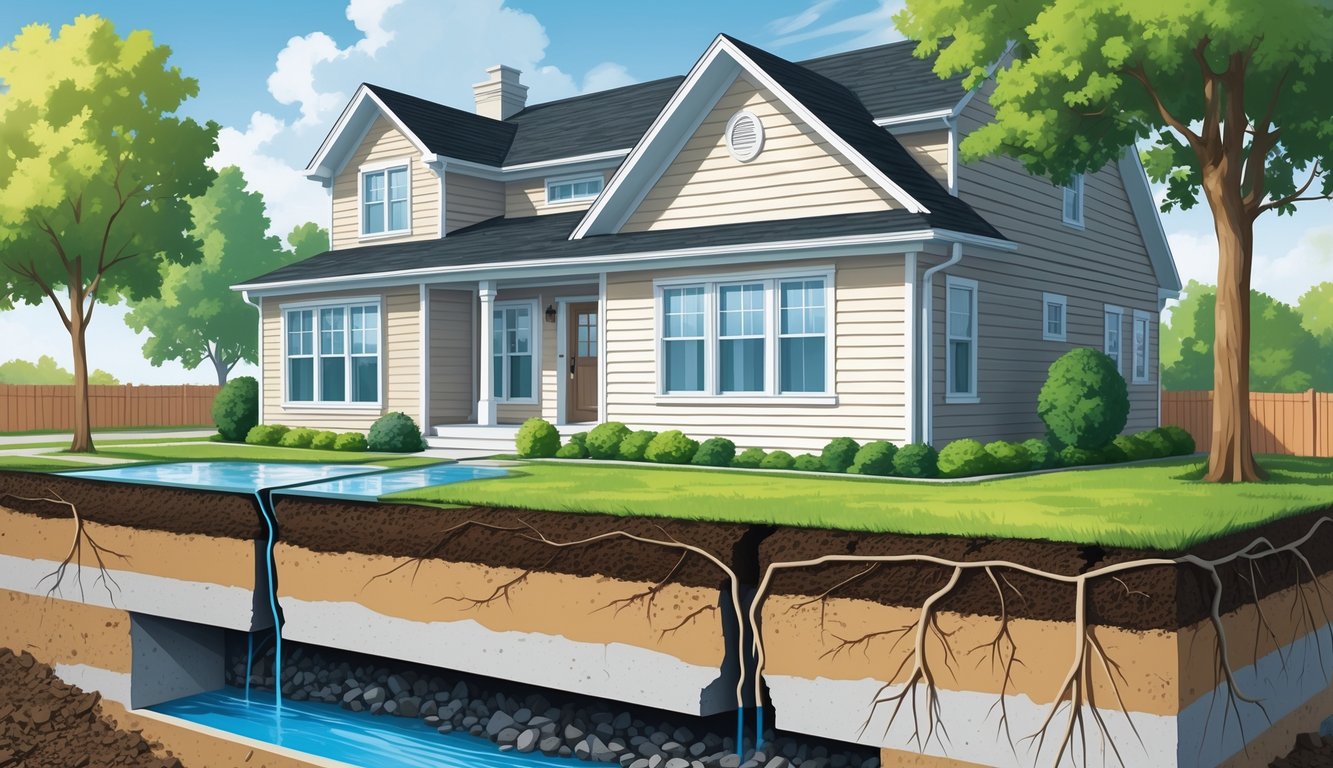
Drainage Issues and Foundation Damage

Water always finds a way to ruin your day. Soil gets heavy, cracks open up, and suddenly you’re on the phone asking if “horizontal or diagonal” matters. Some guy’s poking your wall with a moisture meter, mumbling about “subsurface drainage.” Ignore water problems and you’ll pay for it. That’s not just me, every inspector I’ve ever met will say the same.
How Poor Drainage Leads to Cracks
Here’s the thing: you can landscape, waterproof, whatever, but if water doesn’t drain away, the dirt under your house swells up. My friend Sam swears it’s just clay, but that’s not true. Any soil can shift. Brick, concrete, doesn’t matter. Wet dirt expands, dries out, contracts, and your foundation plays along. Look around DFW after a rainy month, cracks everywhere.
Angie’s List ran a thing on this—pros blame uneven moisture for most foundation cracks. I didn’t buy it until I saw a friend’s basement. The cracks looked like a toddler’s drawing.
Insurance? Forget it if they blame water. Even sidewalks heave. My neighbor’s front step is three inches higher than the sidewalk now. Not kidding.
Water Pooling and Water Seepage
Water pools near the slab, sneaks into every crack, and by the time you notice, it’s too late. I’ve stared at a puddle in the basement, shrugged it off, then found out the wood sill’s rotting. You don’t even need a flood. Just a little puddle, over and over—bad grading, clogged French drain, whatever.
Cleveland Foundation Repair says slow seepage can wreck your foundation over years. Not days. Years.
Nobody talks about the wallpaper peeling or floors getting weirdly “springy.” Or that musty smell that means water’s creeping behind the drywall. Some inspectors bring fancy thermal cameras. Mine just pointed at a wet spot and offered to sell me a dehumidifier.
Maintaining Gutters and Downspouts
I know, everyone says to clean your gutters, but skipping it really does mess up drainage. Let leaves pile up, water just dumps right by the foundation. No dramatic flood—just slow, steady erosion. Sometimes it’s just a missing downspout extender and you’re in for years of headaches.
Gutter guards? Meh. If you hate ladders, maybe worth it. I’ve pulled out enough pine needles to fill a compost bin. Downspouts that don’t run five feet out? Inspectors love to nag about it.
Every repair guy I’ve met says check your gutters every few months. They’ll show you rotted siding and cracked concrete where water poured for years. Homeward Environmental swears by gutter maintenance, but nobody mentions the birds nesting in the elbows.
The Role of Plumbing and Moisture Intrusion

Water just does what it wants. Ever chase a leak and end up with a bigger mess? Welcome to my life. Plumbing’s got secrets, and surprise puddles show up when you least expect it. Mold? It always wins. No idea how.
Plumbing Leaks and Pipe Issues
Let’s just say, nothing like crawling around your own floorboards at 2 a.m. with a flashlight, trying to figure out why the water meter’s spinning like a roulette wheel, right? No puddles, no drama—just this relentless tap-tap somewhere behind the walls. I mean, is it just me or do pipes wait until you’re broke to start leaking? And sure, everyone’s obsessed with storms and floods, but nope, it’s the sneaky plumbing leaks that’ll gut your savings. Had a plumber tell me, “Tiny leaks, not big bursts, will bleed you dry.” Makes sense. Slow leaks burrow under tiles, mess with the foundation, and suddenly your shower pressure’s a sad joke.
Notice your water bill spiking? Hear weird hissing in the walls? It’s not your imagination, trust me. Inspectors love sniffing around for stains, soft drywall, and that “musty” smell—basically a neon sign for “mold incoming” (if you’re into doomscrolling, here’s a home inspection guide). Honestly, it’s not always the dramatic pipe burst. Sometimes it’s just a slow drip from a joint that’s been quietly rusting for decades. Or maybe your water’s too acidic—was that even on the homebuyer’s checklist? Didn’t think so.
Damp Basements and Mold Growth
Every summer, my basement turns into a swampy locker room. Damp creeps up the concrete like it’s auditioning for a horror movie. You think those tiny cracks in the foundation are “character”? Please. Water finds a way in, and then you get the joy of black mold popping up under the stairs. Mold doesn’t need a flood—just a little humidity, some darkness, and a couple days. I read somewhere (probably while panic-Googling at midnight) that horizontal cracks are way worse than vertical for sucking up moisture. Why? Who knows, but it’s apparently true if you’ve got bad gutters or live where rain never stops.
A structural engineer once told me, “If it smells musty, you’re already too late.” He wasn’t wrong. By the time paint peels or the drywall goes soft, you’re basically running a mold Airbnb. Dampness means wood rot, rusty beams, and if you’re really unlucky, the kind of toxic mold that makes your throat itch for weeks. If I could go back, I’d never have shrugged off those “old house” damp spots. Turns out, they’re not charming—they’re red flags (and here’s more proof if you need it: water intrusion warning signs).
Other Factors That Cause Foundation Trouble

Did anyone warn me that homeownership means staring at dirt and cracks more than actual living? Nope. Foundation issues? It’s not just age or shoddy builders—sometimes it’s the tree you planted, or the weather, or just bad luck. I swear, every season brings a new disaster.
Tree Roots and Landscaping
Trees are pretty until you realize their roots are basically tiny jackhammers. Watched my neighbor’s driveway buckle from a gum tree—arborists call it “root uplift,” but I call it “expensive.” Roots can push into foundation walls at over 2 centimeters a year (yeah, I looked it up), and don’t even get me started on garden beds too close to the house.
I planted agapanthus—looked innocent enough—turns out, they suck moisture from under slabs and make soil shrink. One report I read called over-watered lawns a top cause for uneven footings. So, soil expands, contracts, never quite goes back to normal. I tried DIY root barriers once. Hit a stormwater pipe. Should’ve listened to the landscaper. And if your trees are taller than your gutters? You’re probably already losing the battle. See, every engineer I’ve talked to brings up root invasion within five minutes. Coincidence? Doubt it. More on landscaping and foundation cracking here.
Natural Disasters and Weather Extremes
Oh, you thought you moved to a “safe” suburb? Joke’s on us. Stormwater runoff, shifting soil, it doesn’t care about your postcode. After a week of heavy rain, the number of insurance claims shoots up. Floods? They’ll make your porch tilt overnight. Earthquakes? Rare, but when they hit, insurance barely touches the damage. I remember the Sydney mini-quake—everyone suddenly became a foundation expert.
Ever heard of “consolidation settlement”? Neither had I, until a client’s house literally changed shape after an east coast low. Last engineer I paid sent me a 30-page hydrology report with zero actionable advice except “expect more damage after La Niña.” Great, thanks. And apparently, foundation defects jump 8-11% after big weather events, especially in clay soils (here’s a breakdown of weather-related foundation problems).
And all that “wisdom” about watering your slab in a heatwave? My builder laughed. Said it’s wishful thinking. Next time someone brags about drought-tolerant lawns, ask if their patio’s level.
Temperature Fluctuations and Freeze-Thaw Cycles
One winter, I left the hose by the foundation. Genius move. Overnight freeze split the soil, then it thawed and turned the ground to mush. By spring, cracks everywhere. Classic freeze-thaw—water gets in, freezes, expands, thaws, repeat until something breaks. Engineering books say water expands by 9% when it freezes. I believe it. Friend’s house warped an entire wall from a decade of this nonsense. Inspector blamed bad fill and freeze-thaw stress. John, my go-to engineer, said unsealed joints were just “water highways.” Not a single real estate agent mentioned this when I bought.
If the weather wasn’t so all-over-the-place—hot, cold, wet, dry all in one week—maybe it’d be fine. But with climate change, these wild swings are the new normal. I’ve tried every sealer out there. None of them worked long-term.